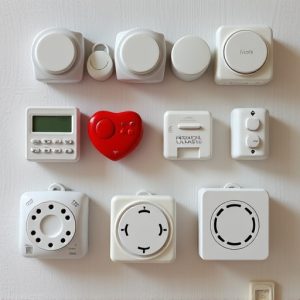Panic Alarm Devices: Features, Selection, Testing for Ultimate Protection
Handheld personal protection alarms are compact, portable devices designed for self-defense and emer…….
Handheld personal protection alarms are compact, portable devices designed for self-defense and emergency notification, featuring a powerful panic alarm sound that deters threats. Key factors include a loud, distinctive panic alarm sound, suitable carry distance, and a design adapted to specific scenarios. Regular testing ensures effectiveness, while proper maintenance keeps the device ready for use in emergencies.
“Personal protection has evolved with the advent of handheld personal alarm devices, offering individuals a sense of security on the go. This comprehensive guide explores handheld personal protection alarms, their key features, and the critical factors to consider when choosing one.
From understanding the powerful panic alarm sound to assessing the carry distance for optimal range, this article equips you with insights for selecting and maintaining your personal safety tool. By delving into these aspects, users can make informed decisions, ensuring peace of mind and reliable protection.”
- Understanding Handheld Personal Protection Alarms: A Comprehensive Overview
- Key Features and Components: What to Look For in a Panic Alarm Device
- Selecting the Right Panic Alarm for Your Needs: Factors to Consider
- Testing and Maintenance: Ensuring Your Alarm is Reliable When It Matters Most
Understanding Handheld Personal Protection Alarms: A Comprehensive Overview
Handheld personal protection alarms are compact, portable devices designed to provide individuals with an effective means of self-defense and emergency notification. These powerful tools emit a loud panic alarm sound that can attract attention and deter potential threats, making them invaluable for personal safety in various scenarios. The primary function is to offer immediate assistance during emergencies, allowing users to quickly alert others nearby or even dispatch emergency services.
These alarms are typically easy to carry and can be conveniently clipped onto bags, keys, or even worn as a necklace or bracelet. Their design focuses on simplicity and ease of use, ensuring that anyone, regardless of age or physical ability, can activate the alarm with just a single button press. The range at which the panic alarm sound carries is another critical factor; these devices are engineered to project a clear signal over a considerable distance, allowing users to signal for help from afar if needed.
Key Features and Components: What to Look For in a Panic Alarm Device
When choosing a handheld personal protection alarm device, several key features and components warrant careful consideration. Firstly, Panic Alarm Sound is paramount. Look for devices with loud, distinct sirens that can attract attention quickly. Some models even incorporate stroboscopic lights to disorient potential assailants.
Secondly, Carry Distance is another crucial factor. Ensure the alarm is compact and lightweight enough to carry conveniently. A device with a good range allows you to activate it from a safe distance, giving you time to escape. Additionally, consider features like long-lasting batteries, water resistance, and easy activation mechanisms for optimal protection in various situations.
Selecting the Right Panic Alarm for Your Needs: Factors to Consider
When selecting a handheld personal protection alarm, several key factors should guide your choice. One of the primary considerations is panic alarm sound. Look for devices that offer loud, piercing alarms designed to draw attention and deter potential threats. The carry distance of the signal is equally important; ensure the range meets your needs, whether it’s for personal safety in a crowded area or outdoor activities where you might be farther from assistance.
Consider also the type of situations you’ll need protection in. Water-resistant models are ideal for outdoor use, while compact designs offer convenience and ease of carrying. Additional features like stun functionality, LED lights, or GPS tracking can enhance safety but may not be necessary for everyone. Prioritize based on your specific needs and environment to choose the best panic alarm for your personal protection.
Testing and Maintenance: Ensuring Your Alarm is Reliable When It Matters Most
Testing and Maintenance: Ensuring Your Alarm is Reliable When It Matters Most
Regular testing is crucial to guarantee that your handheld personal protection alarm device will emit a loud, effective Panic Alarm Sound when needed. Check the carry distance regularly by testing the signal strength in different environments; this ensures you’re prepared should you need to activate it while outdoors or in a crowded area. Many devices come with built-in test features allowing you to simulate various scenarios without triggering an actual alarm, which is handy for practice and peace of mind.
Proper maintenance includes keeping the device charged, regularly replacing batteries (if applicable), and storing it in a protective case when not in use. Some models may also benefit from occasional cleaning to remove any debris that could interfere with its operation. By adhering to these simple care guidelines, you’ll maximize your alarm’s reliability, ensuring it’s always ready to provide the safety net you need in an emergency situation.
Handheld personal protection alarm devices are valuable tools that can provide peace of mind in potentially dangerous situations. By understanding the key features, selecting the right model for your needs, and ensuring proper testing and maintenance, you can rely on these devices to emit a loud and effective panic alarm sound with a sufficient carry distance when emergency assistance is needed. Remember to choose a device that suits your lifestyle and preferences, ensuring you’re prepared for any unexpected events.


